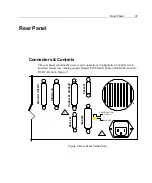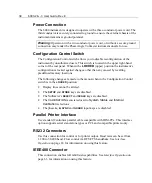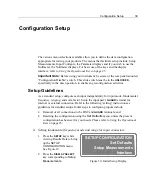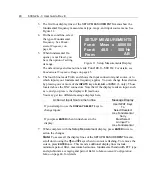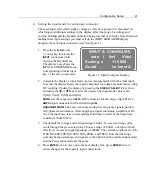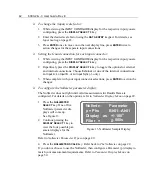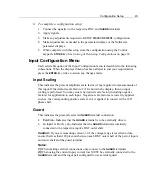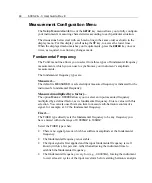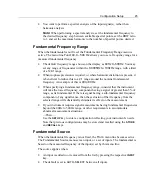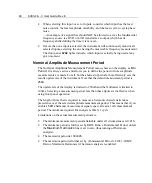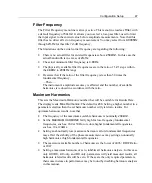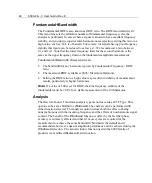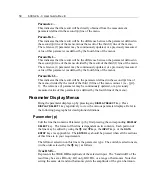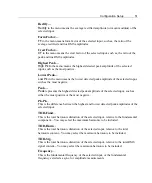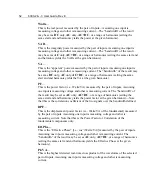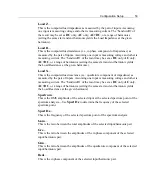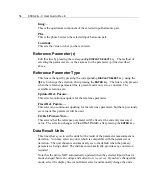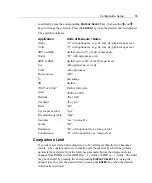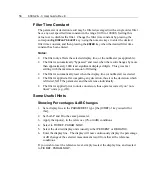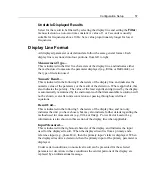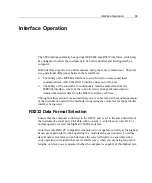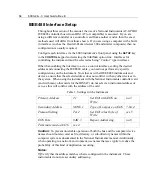
50
6000-2 & -3 User Guide, Rev E
Parameter—
This indicates that the result will be directly obtained from the measurement
parameter defined in the second (
p
) line of the menu.
Param-Ref—
This indicates that the result will be the difference between the parameter defined in
the second (
p
) line of the menu, minus the result of the third (
r
) line of the menu.
The reference (
r
) parameter may be continuously updated, or a previously measured
value of this parameter (as defined by the fourth line of the menu).
Param/Ref—
This indicates that the result will be the difference between the parameter defined in
the second (
p
) line of the menu, divided by the result of the third (
r
) line of the menu.
The reference (
r
) parameter may be continuously updated, or a previously measured
value of this parameter (as defined by the fourth line of the menu).
Param/Ref-1—
This indicates that the result will be the parameter defined in the second (
p
) line of
the menu, divided by the result of the third (
r
) line of the menu, minus 1 (i.e., [p/r]-
1). The reference (
r
) parameter may be continuously updated, or a previously
measured value of this parameter (as defined by the fourth line of the menu).
Parameter Display Menus
Bring the parameter displays up by pressing any
DISPLAY SELECT
key. Press
DISPLAY SELECT 1
key repetitively to view the various parameter displays. Refer to
the following paragraphs for descriptions/definitions.
Parameter (p)
Edit the line that contains Parameter (p) by first pressing the corresponding
DISPLAY
SELECT
key. The format of this line is dependent on its contents. Each portion of
the line may be edited by using the
é
and
ê
keys, the
INPUT
keys, or the
DATA
ENTRY
keys (as applicable). The
ENTER
key should be pressed when all the sections
of this line are to your requirements.
The leftmost selection on this line is the parameter type. The available selections are
(in the order selected by the
é
key) as follows:
True RMS—
Represents the
TRUE RMS
amplitude of the selected input. The “bandwidth” of the
result may be set as
DC
only,
AC
only,
AC+DC
, or a range of harmonics. Note that
setting the same start and end harmonic yields the amplitude of the given harmonic.
Summary of Contents for Xitron 6000-2
Page 1: ...USER S GUIDE 6000 2 6000 3 Phase Angle Voltmeters...
Page 2: ......
Page 36: ...36 6000 2 3 User Guide Rev E...
Page 86: ...86 6000 2 3 User Guide Rev E...
Page 94: ...94 6000 2 3 User Guide Rev E...
Page 101: ...Appendix B 101...


